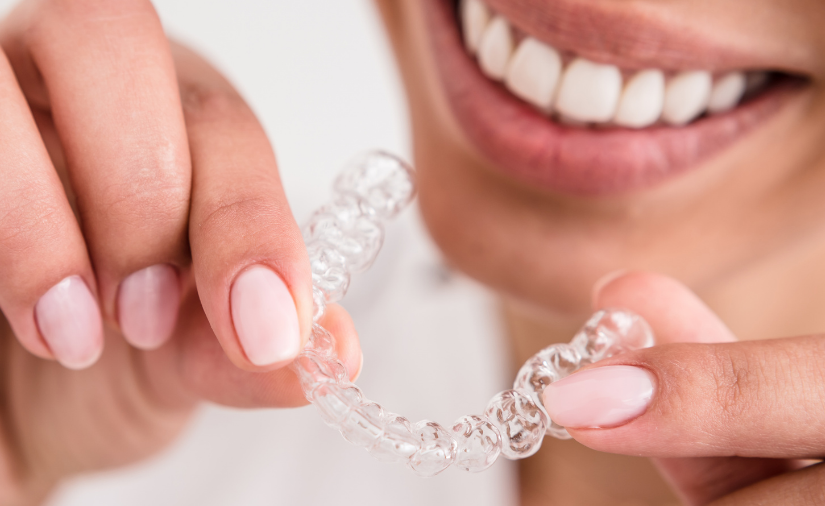By: Dr. Elizabeth Eggert
Invisalign is the next generation of braces. These clear aligners are often called “invisible braces” because they function much like traditional braces, but they’re wonderfully discreet. In fact, the company has been supplying their product since 1999, to over 6.4 million patients across the globe, 1.5 million of whom were teenagers at the time of treatment.
If you’re wondering why you haven’t noticed them out and about, that’s just testimony to how invisible they can be. While they may be noticed by folks who are up close and personal, they are extremely hard to detect from a distance.
In addition to being hard to see, they have another benefit over conventional braces – they are easily removed for eating, brushing, flossing, and cleaning, so they are much simpler to live with.
How Do Invisalign Aligners Move Teeth?
Invisalign treatments move teeth the same way that traditional braces do: with slow, persistent traction.
First, let’s talk about the biology of teeth and how they’re anchored. A tooth is connected to your jawbone by a periodontal ligament. This ligament is composed of a bundle of fibers that contain collagen, which is a type of protein. These fibers provide the anchor that secures your teeth to the bone of the jaw.
On one end of the ligament, the collagen fibers attach to surfaces of the tooth’s root by depositing a substance called cementum into living cells on one side of the bone. On the other end of the periodontal ligament, the fibers reach into your jawbone.
While we often think of our teeth as planted, rock-solid, into the jaw, they are actually dynamic. The ligament anchor system permits limited movement as the teeth react to the forces inherent in biting.
Your periodontal ligament, cementum and jawbone react to the continually changing pressures in your mouth. The act of chewing actually has a restorative impact. When you bite, the tension and compression that result are relayed to your ligament through its many protein fibers. Tension causes cementum to be deposited in the bone while compression causes the resorption or dissolution of bone and cementum. These ongoing oppositional forces and reactions help to keep your teeth anchored and in position.
The bottom line is that your teeth aren’t actually rock solid: they are naturally capable of subtle wiggling and repositioning.
How Invisalign Helps Teeth Change Position
Invisalign treatment works by relying on the natural processes within your mouth. The aligners gently and subtly reposition teeth slowly over time. Patients generally receive a new set of Invisalign aligners every one to two weeks. Each set is designed to move your teeth 0.25mm during your first three days wearing them. During that three-day period, the periodontal ligament adjusts itself to the new alignment. For the remainder of the two weeks, the collagen fibers of the ligament are applying cementum in order to attach to your bone in their new position.
In order to get good results, Dr. Jeff and Dr. Elizabeth encourage Invisalign patients to wear their invisible aligners for the recommended daily period, which is generally 22 hours per day. This translates to removing aligners only to eat, floss, brush, and to clean the aligners. The rest of the day and night, leave them in place for the most effective treatment.
Talk to us about a customized Invisalign treatment plan for you and your family. We’d be delighted to help get you all on the path to a straighter, healthier smile! Call us today at 651.482.8412!

